It’s no surprise that I love exploring new places, and getting to visit a hidden gem like Bosnia, was a dream come true. Not only does the country have the most breathtaking spots, but it is one of the last regions in Europe with vast tracks of wild and untouched nature. And if you are planning to visit Bosnia, I have the perfect 3 day weekend itinerary for your visit!
Day 1
On the first day, we visited the town of Trebinje, which is also referred to as “little Dubrovnik”. The sun-kissed Mediterranean town founded by Romans has a history of more than 2000 years. Even though the town’s Roman buildings and churches were destroyed by the invading Slavs in the 6h and 7th century, many foundations and archeological artifacts remain.
Fun fact: Trebinje sits on the river Trebisnjica, which according to some sources, is the longest sinking river in the world.
While in Trebinje, we had the pleasure to visit Vinarija Andjelić. The winery is owned by the Andjelic family, and they have been producing wine for over a century! Their wines are produced with a variety of local grapes, including the Zilavka, a white grape. They also produce wine with Vranac, a red grape, which is cultivated in neighbouring Montenegro.
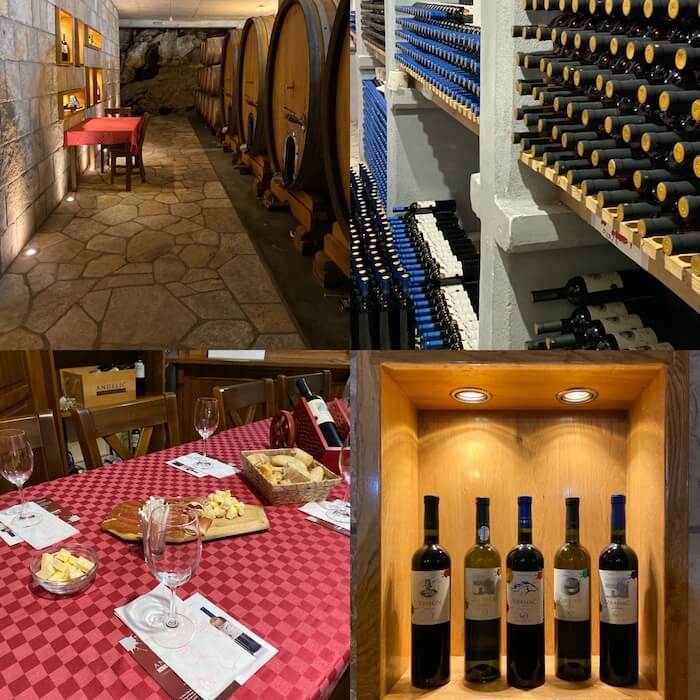
We also visited the local market in the town center and tried fresh pomegranates, figs and cheeses! One thing that really stuck me was how friendly everyone was. Even though they did not speak English, they took the time to let us try and see everything.
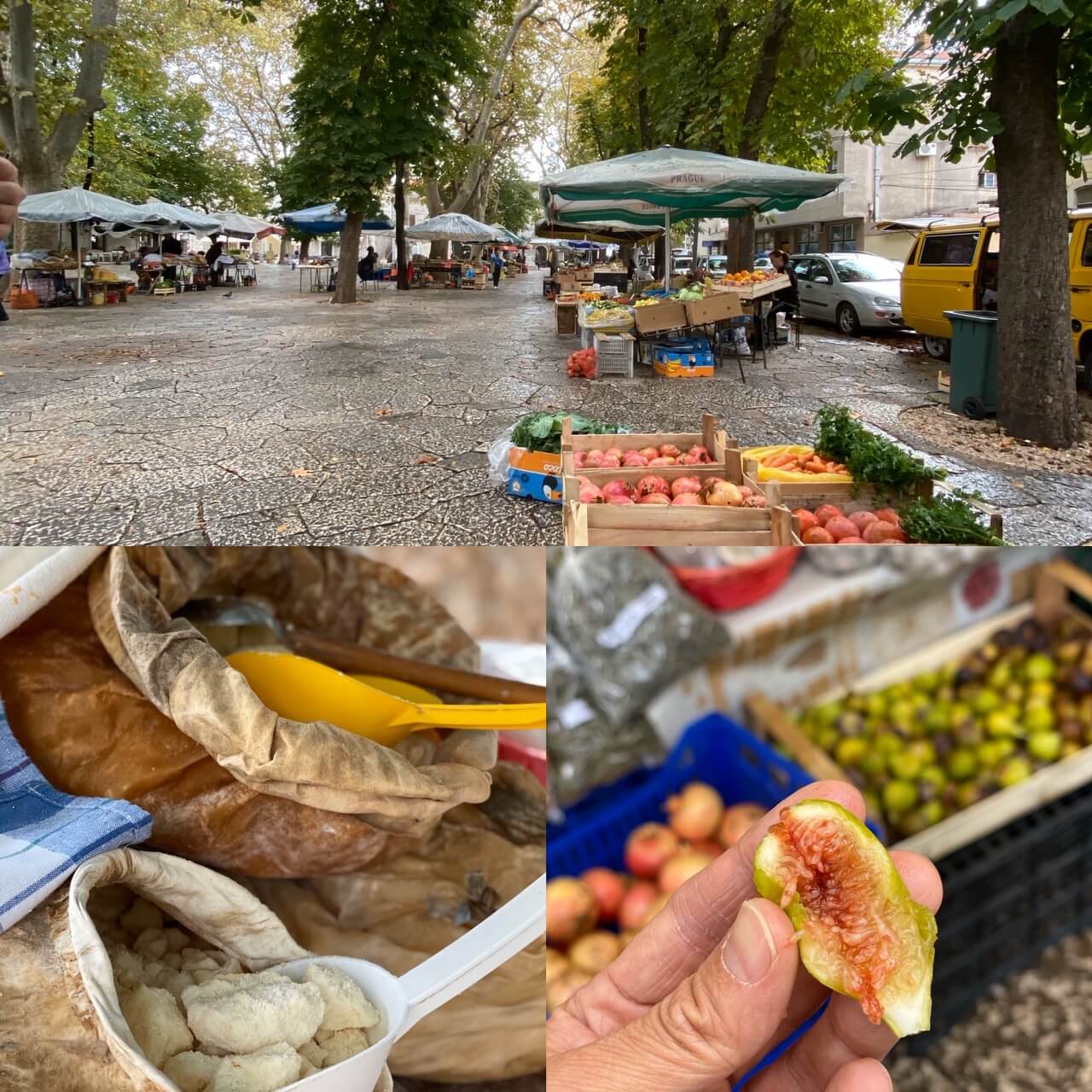
The local railway track is another destination that is rich with history. This was definitely one of the highlights of the trip for me because it was “off the beaten path” and most people do not take this route. The new highways are faster and more direct but I would argue this route is a lot more scenic and fun. The path is narrow and at times I did worry we may skid off, but that was part of the trill and adventure. Although it has been modernized in ways, the roads are more than 2000 years old. Villages, historic churches, buildings, monuments and ruins are all found along its length, but don’t go off path (too much) as parts of the area saw heavy fighting during the last war, and there are land mines in some locations. Scary, right? We did stop by a few abandon villages (great unique photo-ops), unused train stations, and a small local church and cemetery that are still visited by local villagers. Super cool!
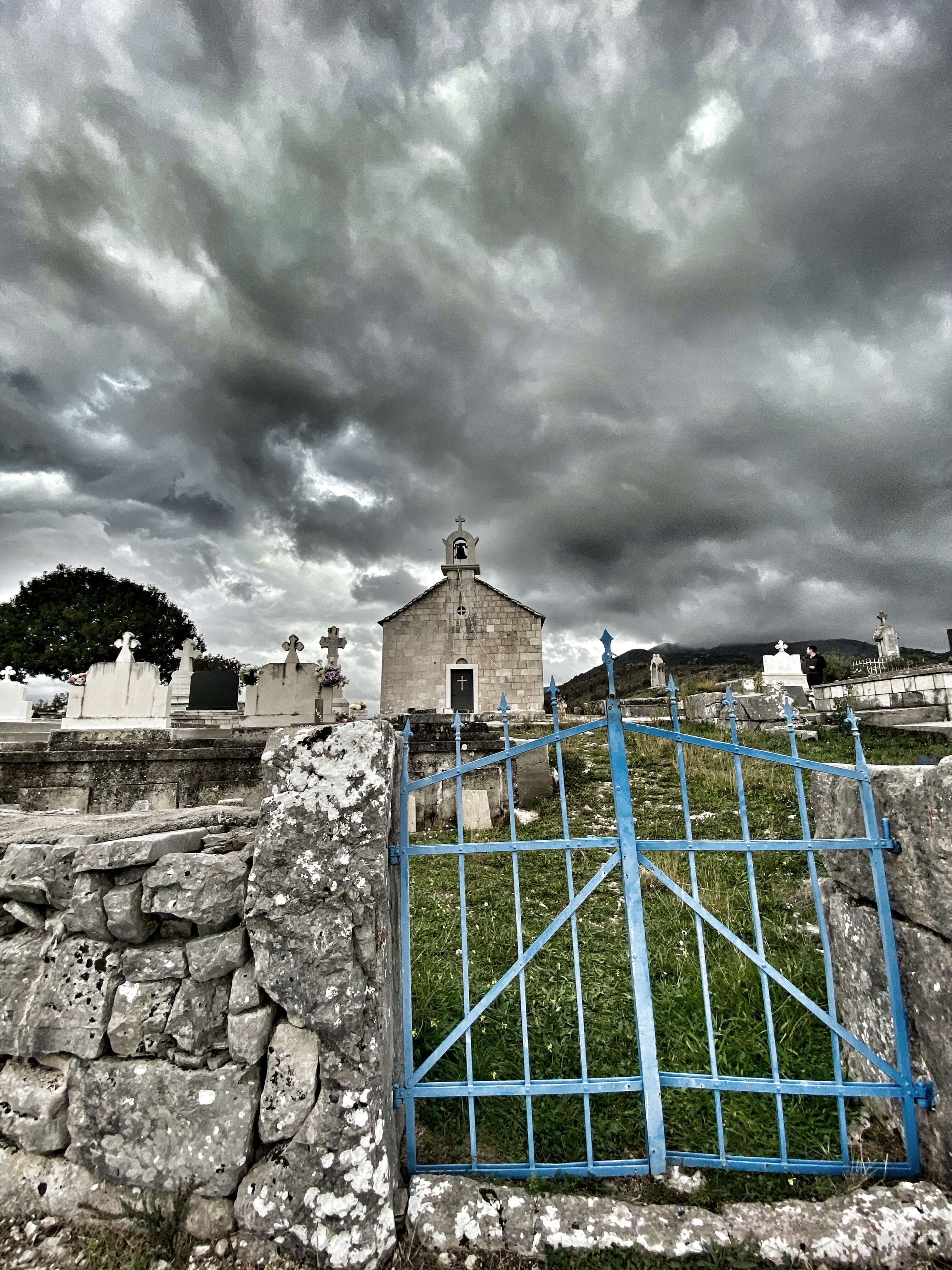
For a great dining experience, check out Studenac by the Trebisnjica river. It is a stunning property. The restaurant serves local Mediterranean cuisine with very fresh ingredients, in fact they have a fish hatchery/pond on the property and if you order fish, they pick it fresh from there. My favourite dish was the Karadjordjeva snicla (Balkan stuffed schnitzel) with melted cheese inside. You also get a lot of food for a little money, so it’s a good experience all around.

Day 2
On day two, we visited Mostar, a small town straddling the Neretva River, which is famous for the iconic Stari Most (Old Bridge). Mostar and Herzegovina were conquered by the Ottoman Empire by 1482, and the buildings have heavy Mediterranean and Catholic influences as the town was built with the help of Roman architectures. The old town is super cute and I would say it is more quaint and authentic compared to the popular town of Dubrovnik.

Fun fact: As of 2007, the Old Bridge and immediate surrounding streets are on UNESCO’s World Heritage Site list.
In Mostar, we ate at the Tima-Irma, which serves eastern European cuisine. The food was delicious and the location and staff are super friendly. The platters are HUGE and we could barely finish what we ordered.
While in the area, we also visited the Blidinje, a nature park in north-western Herzegovina, which is just over an hour’s drive from Mostar. The landscape is stunning and we saw a necropolis of stecaks (huge medieval era tombstones unique to Bosnia and Herzegovina). These tombstones are another World Heritage Site and you can still see the ancient carvings.
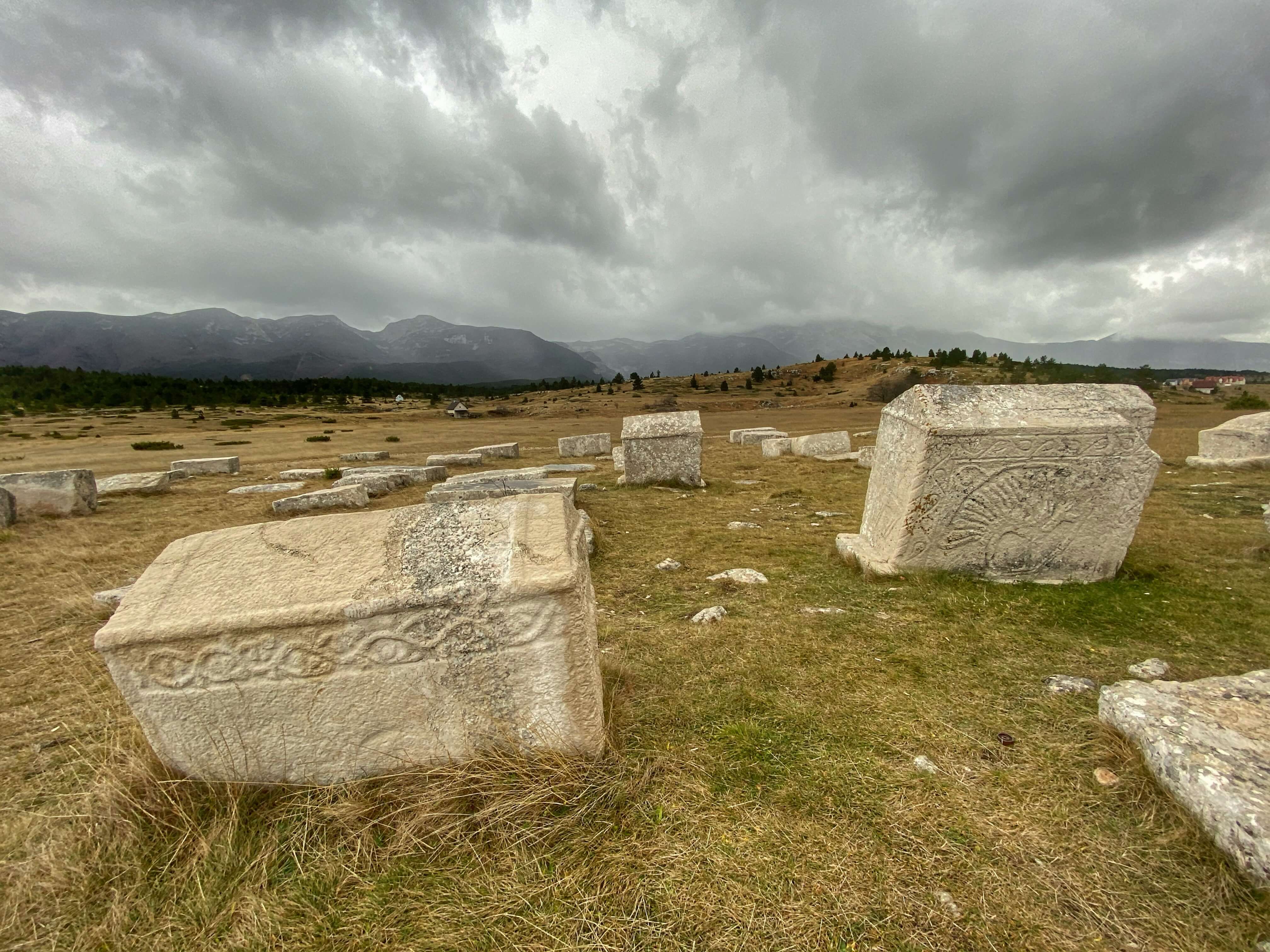
Blidinje, is also a ski resort town in the winter and one of the local restaurants, Hajducke Vrleti, felt like a ski chalet with a giant fireplace in the dining room. They are known for their grill platters. It was like a meat buffet. I was barely able to move afterwards.


Day 3
On our third and last day, we went to Sarajevo, stopping at the town of Jablanica in northern Herzegovina on the way. Here we saw the site of the Battle of the Neretva River.
Sarajevo is the capital and largest city of Bosnia and Herzegovina. Streets date back from the 16th century! In Sarajevo, we first went to the site of the assassination of Archduke Franz Ferdinand in July 1914. This was the spark which lit World War I. We also visited the Despic’s House. The Despic family were a rich Orthodox Christian trading family, who first gained prominence in 18th century Ottoman Turkish Sarajevo. Many furnishings and objects remain from this and later periods.
Another must see location in Sarajevo is the Orthodox Church in town center. The present building dates back to 1519, but sits on the remains of an older, medieval church. The legend goes that then Ottoman governor during that period would only allow the building of a church if it was the size of one sheep skin. The Orthodox Christian bishop then unwound the wool from the skin, giving the church its proportions!
Fun fact: There is a public toilet, dating back to 1526. During the 16th century, Sarajevo already had a fully functioning sewage system, many drinking water fountains, several public baths and, of course, public toilets.
One of the most unique spots in the city is where East meets West, and the contrast is stark! On the main pedestrian thoroughfare, Ferhadija, the cultural equator is marked for posterity on the pavement and a sign encourages visitors to take a photo looking first one way up the street, and then the other. In one direction, you can see Austro-Hungarian architecture and a mosaic of western shop signs. With a simple turn of the head, you are transported to a different world as the outlook abruptly changes into a Turkish bazaar. On one side of this line, people sit and drink beer at tables on the street, while on the other, there isn’t a drop of alcohol to be found. Instead, you’ll find open-fronted cafes offering strong Bosnian coffee and also, perhaps, a puff on a hookah pipe.”

While in Sarajevo, we had lunch at Buregdžinica Sač, one of the top restaurants in the city. They serve Bosnia’s most traditional dishes, burek, a pastry filled with meat, cheese or potatoes, topped with yogurt if you want it. It was mind blowing and we thought this should definitely replace the pizza as North America’s cheap eats on the go!
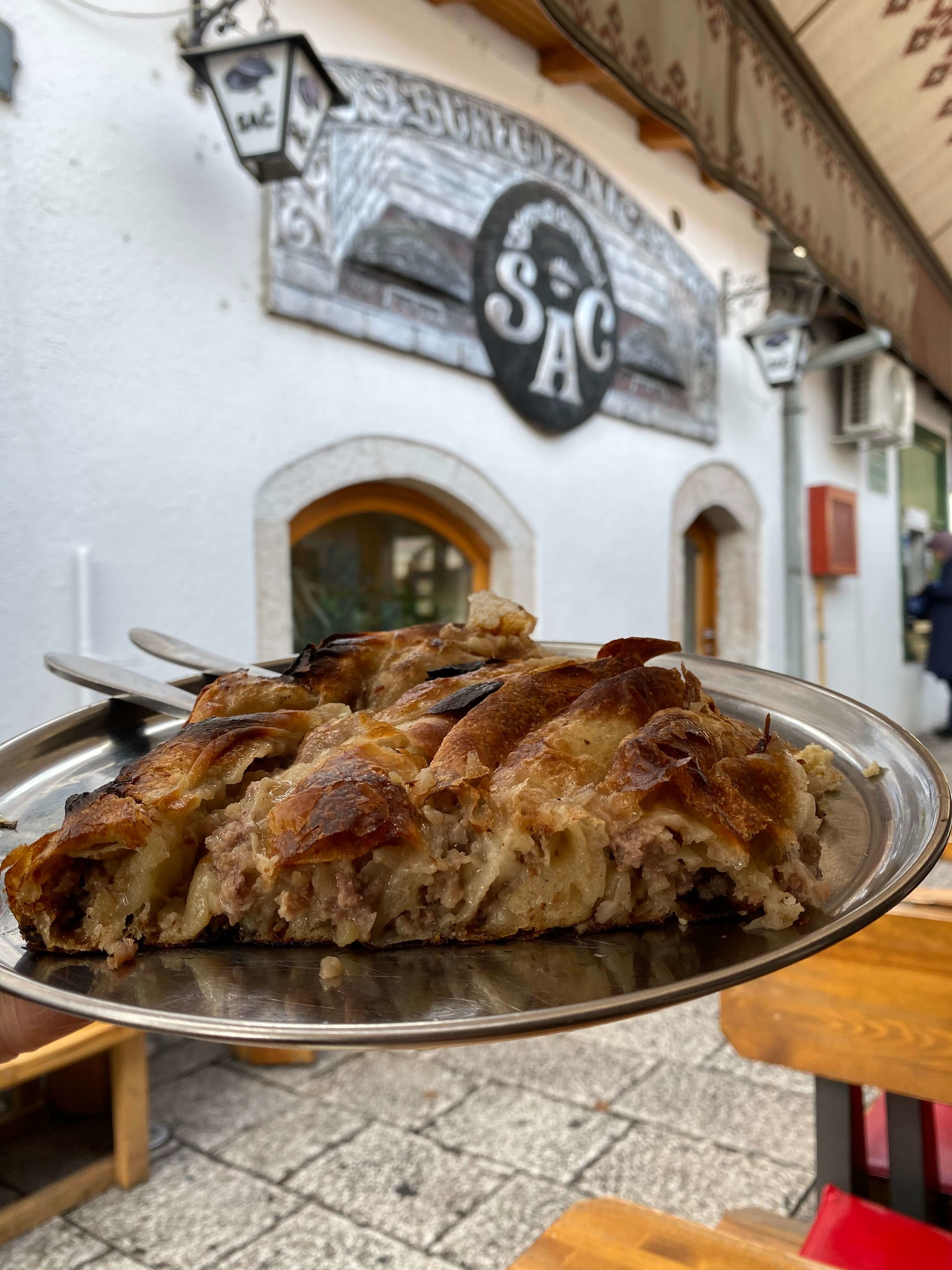
We also had a drink at Goldfish bar – a super unique with an eclectic array of treasures used as décor. This place transports you in time to somewhere magical.
For dinner we went to Dveri, known not only for its local cuisine but also for the romantic ambience. They serve traditional Bosnian fare, with dishes such as goulash or sausage stew!
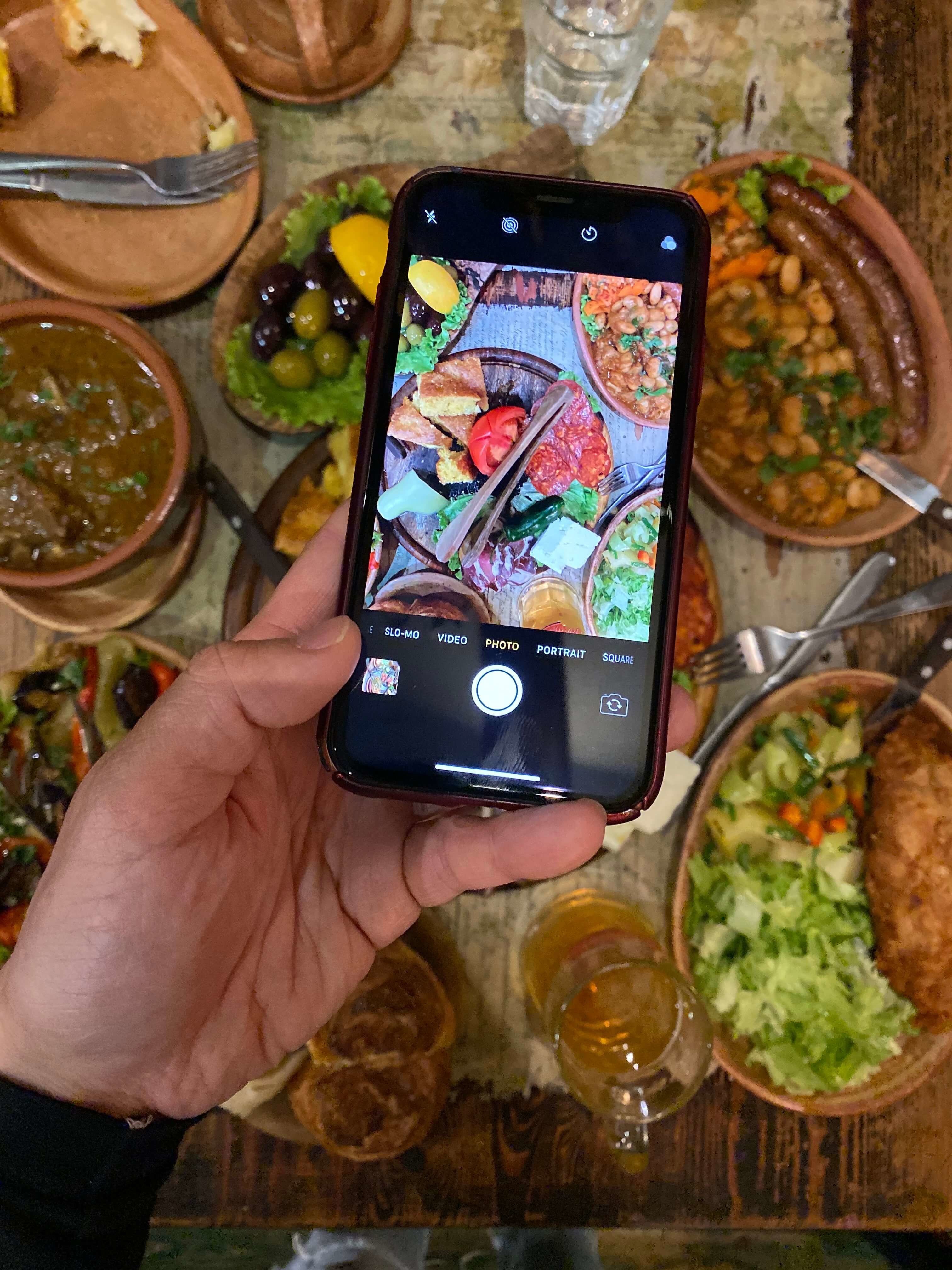
If you are looking for a unique travel experience that is not typically on people’s bucket list, although it should, Bosnia is the place to go. To make the most out of it, we attended a tour organized by Real Escape Travel, which is known for providing authentic experiences in under-explored countries. Our tour guide, Dino Zelenika, was super knowledgeable, which made our trip even better!

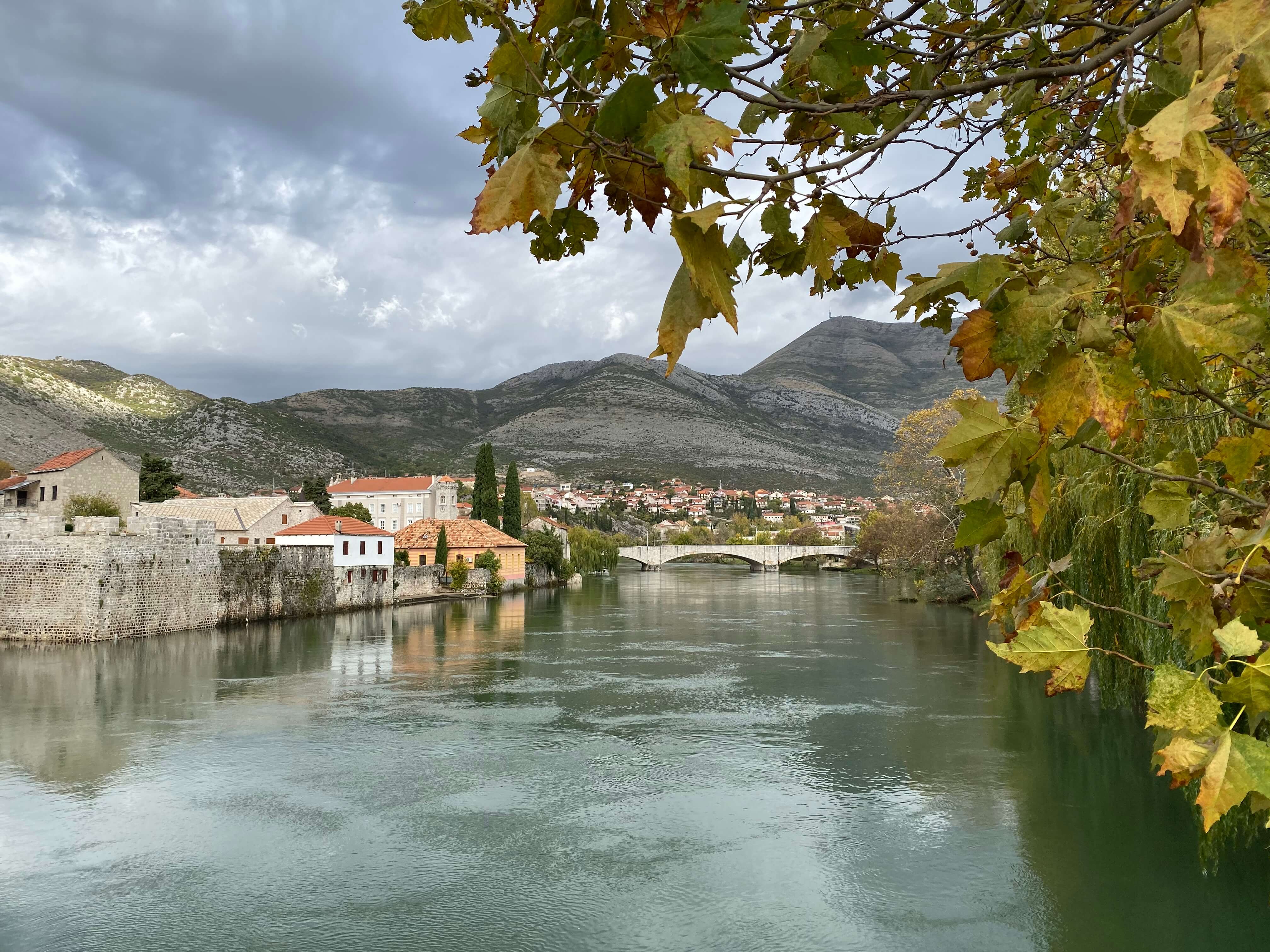

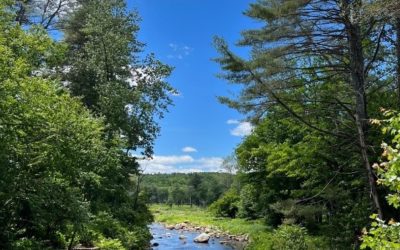
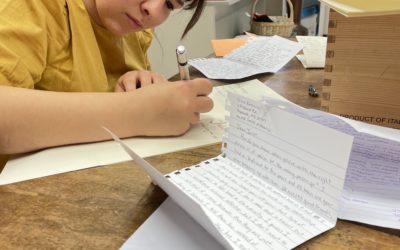





















0 Comments